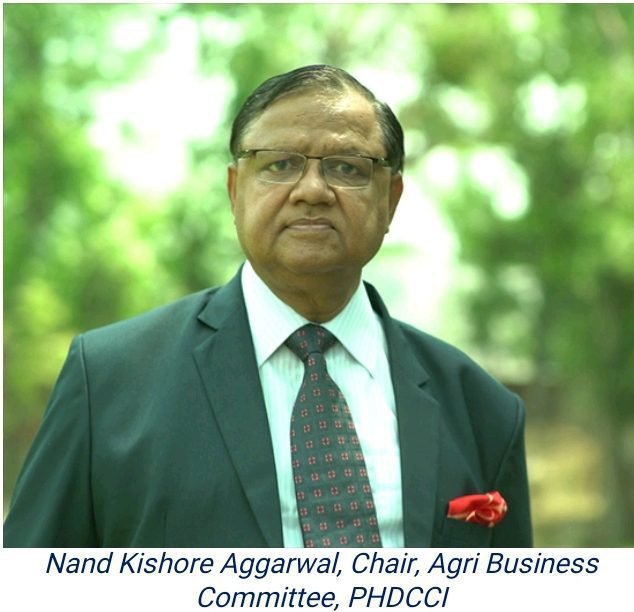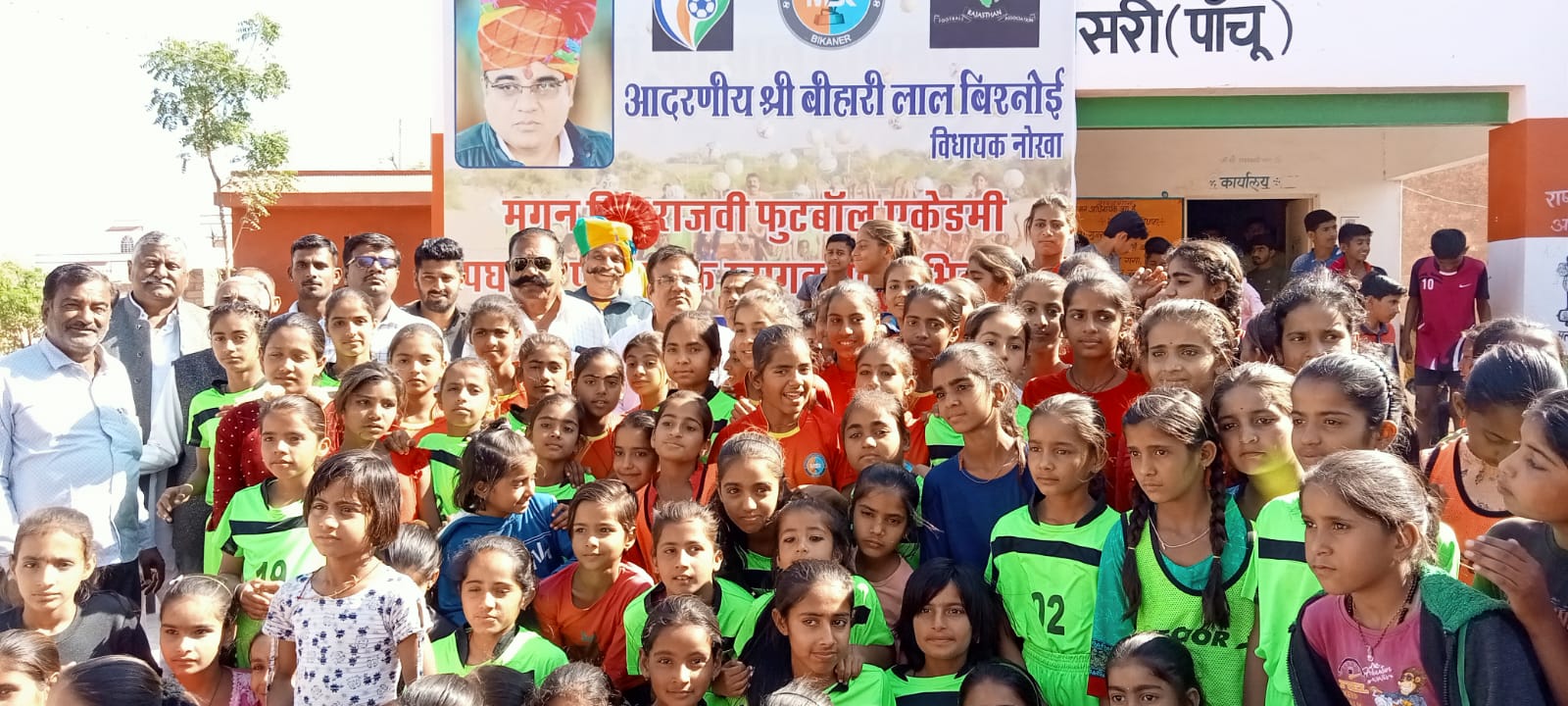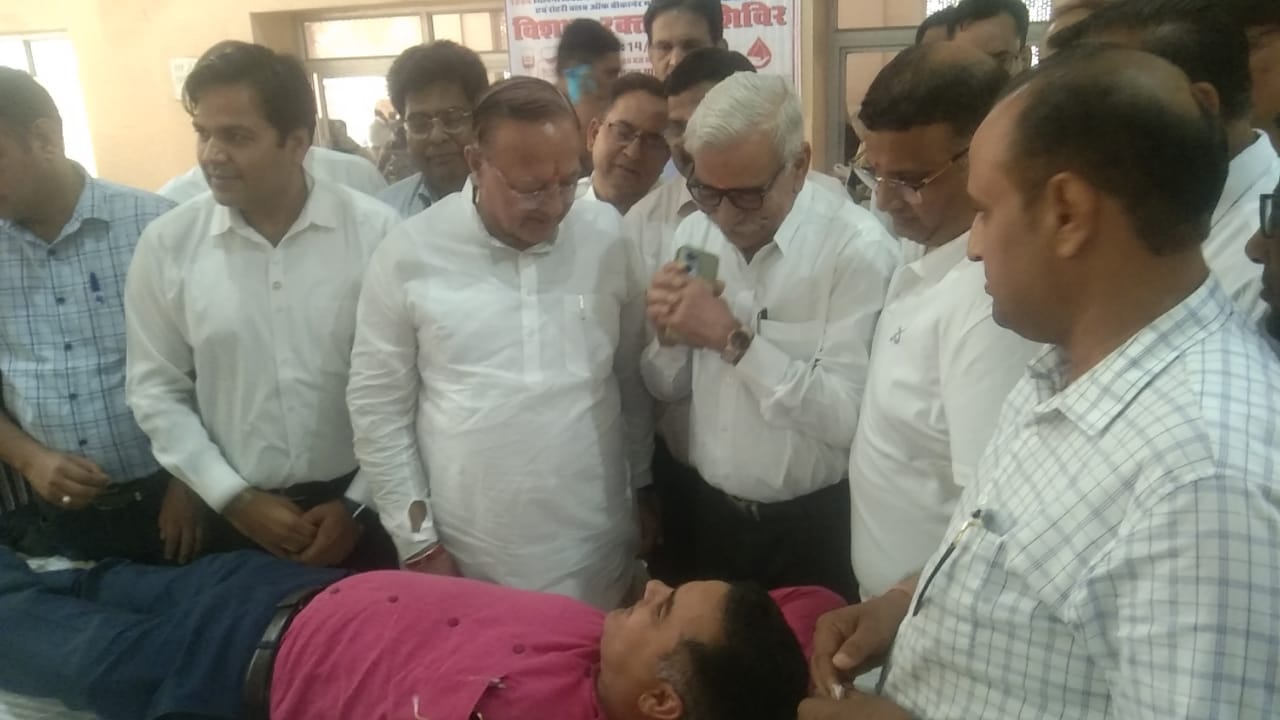Contribution of Agriculture to making India a USD 5 trillion economy
✍️Nand Kishore Aggarwal, Chair, Agri Business Committee, PHDCCI✍️

BIKANER. Indian agriculture is unique due to its diverse nature in climate and geography. India enjoys almost all types of climates. Agriculture is still the most significant sector contributing 35% of the national income and 14 % of the National GDP1. Agriculture is the backbone of the Indian economy. Agricultural inputs like seeds, fertilizers, and agrochemicals play major roles in improving agricultural output by preventing major losses incurred due to pest, diseases, and weeds. The challenge remains to enhance crop yields in a limited arable land area under climatic change impacts. Weather forecasting can be quite useful in developing preparedness strategies for efficient utilisation of rainwater and similarly advanced disease and forecasting systems will help to adopt Integrated crop management systems to boost productivity.
India is currently moving in the direction to reach the target of a $5.0 trillion economy. Agriculture contributes $400 billion to the Indian economy, which is 2nd after China. To achieve this mammoth national target, all sectors of the economy viz., agriculture, industry, and service must outperform outstandingly.
Our total export should be $1.0 trillion annually and the share of agriculture and the allied sector should be 10%. To facilitate $100 million in Agri-export, smart agriculture is pivotal for sustaining our products at the international level1. Aggrotech start-up can play a vital role in this endeavour; however, the bottleneck needs to be addressed within the least possible time. If we succeed in this endeavour, this will not only lead to enhance per capita income from the current $1800 to $3600 but also double the income from farming systematically.
The worldwide attack of the global pandemic of Covid- 2019 disease, resulted in every sphere of life is severely paralyzed. While no sector has remained immune to the impact of the pandemic, one sector that has been an exception is the agriculture sector. The agriculture sector was less affected as the food grain output was recorded highest ever 310.74 MT in 2020-212 and at expected sector growth of 3.9% in absolute term.
India’s rural ecosystem is large and growing steadily and the growth of the Rural Economy which is ~10% per annum would be crucial to the country’s overall growth and inclusive development and will drive the GDP growth rate3. India’s rural sector has a huge footprint as it provides employment to over 50% of the workforce engaged in Agriculture and allied fields such as livestock, poultry, fishing, food processing industry, etc., and supports 66% of the population residing in rural areas. Science and technology-driven Smart agriculture hold an essential role in rural development, in general and agriculture through the integration of three critical components, i.e., data, technology intervention, and management.
Modern farm machineries which are easy to use and Digital technologies like Artificial intelligence, agricultural robots, and drones will further accelerate the growth in the future and attract an educated workforce to this sector facilitating increasing employment opportunities. Without focused research, it will be difficult to ensure food security. Hence the need to encourage and scale up Research and Extension to improve productivity. The role of IPR should also be evaluated to encourage more investment in research and this will lead to new innovations being introduced in Agriculture.
Agricultural exports from India such as agrochemicals, food products, and commodities will also be the key driving force During 2021-22, the country recorded US$ 49.6 billion in total agriculture exports with a 20% increase from US$ 41.3 billion in 2020-214. This will give a good fillip to the flagship “Make in India” program strongly promoted by the Government of India.
The Government of India is ready to join hands with the Indian Industry and is seeking Public-Private partnerships in the agriculture sector. The focus is on developing a conducive ecosystem for PPP projects in Agriculture with ease of doing business so that investments happen in this growing sector. From the manufacturing side.
India is poised to remain the fastest growing largest economy in the world. We are sure that all the dynamic initiatives and schemes launched by the Government in the Agriculture domain for the benefit of the farmers and partnering jointly with the industry for inclusive development, will ultimately help to achieve the vision of our Hon’ble Prime Minister of India of a “$5 trillion Economy” by 2026-275.
As PHDCCI, we propose a national task force to study these issues and have sectoral task forces to develop “National Plan for Food, Feed, Fibre, and fuel Security” This Article is provided by Amit Khare, former commutation head, dhanuka, Indogulf and zydex





